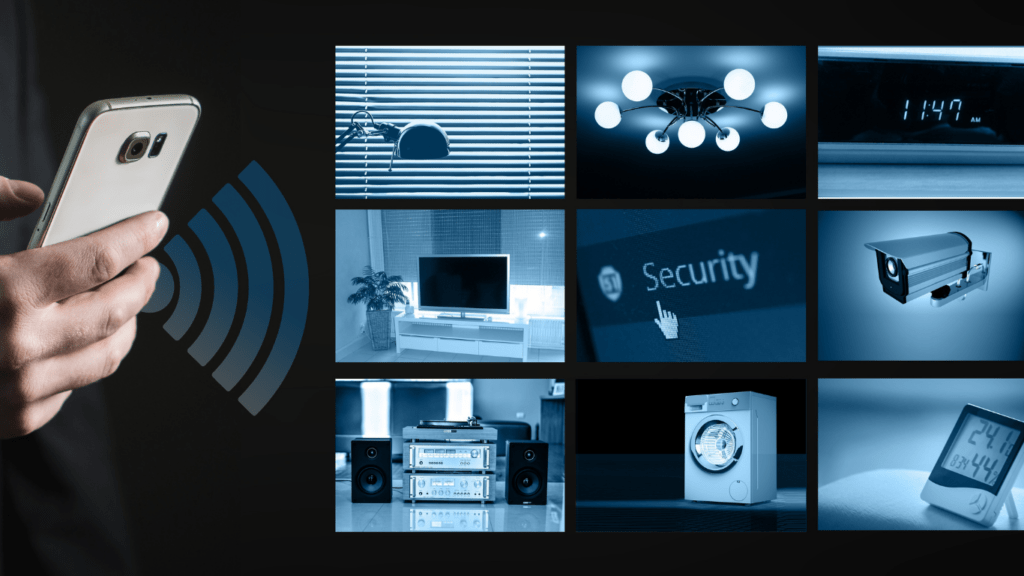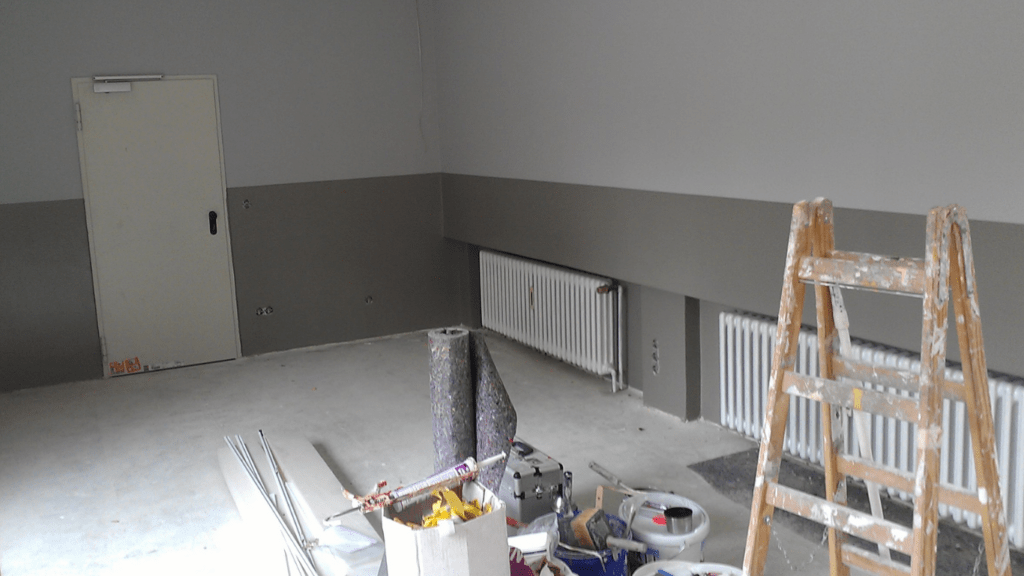Overview of Home Automation
Modern home automation integrates various smart devices and systems to enhance daily living. Intelligent technology automates tasks such as lighting, temperature control, and security, making homes more efficient and comfortable.
Key Components
- Smart Lighting: Programmable LED bulbs and smart switches, controlled via smartphone apps or voice commands.
- Temperature Control: Smart thermostats, like Nest and Ecobee, adjust temperatures based on occupancy and user preferences.
- Security Systems: Smart locks, surveillance cameras, and motion sensors that can be monitored remotely.
- Home Entertainment: Streaming devices, smart TVs, and multi-room audio systems integrated for seamless control.
Integration Platforms
- Voice Assistants: Amazon Alexa, Google Assistant, and Apple Siri act as central hubs for controlling various smart devices.
- Smart Hubs: Devices like Samsung SmartThings and Wink Hub unify and manage multiple smart gadgets through a single interface.
- Mobile Apps: Manufacturer-specific apps provide customized control and monitoring, like the Philips Hue app for lighting or the Ring app for security.
Advancements
- Machine Learning: AI algorithms predict user behavior, suggesting or executing actions like turning off lights when rooms are unoccupied.
- IoT Connectivity: Devices use IoT to communicate and coordinate actions, such as coffee makers syncing with alarm clocks.
- Energy Efficiency: Automated systems optimize energy use, reducing consumption and utility costs, exemplified by smart thermostats adjusting based on real-time data.
- Morning Routine: Lights gradually brighten, thermostats adjust temperatures, and coffee makers start brewing based on user schedules.
- Security Management: When the house is empty, smart locks secure doors, and surveillance cameras activate, providing real-time alerts.
- Entertainment Systems: Voice commands control playlists, streaming services, and TV channels, creating a cohesive entertainment experience.
Modern home automation offers a blend of convenience, efficiency, and enhanced living environments.
Key Technologies Powering Smart Homes

Smart homes are transforming with innovative technologies. Below are the core advancements driving this evolution.
Smart Assistants
Smart assistants revolutionize home control. Devices like Amazon Alexa, Google Assistant, and Apple Siri respond to voice commands, enabling hands-free operation of various household functions. They manage smart lights, adjust thermostats, play music, and even control smart locks. For example, saying “Hey Google, turn off the living room lights” triggers an immediate response, enhancing convenience and energy savings. Integration with other smart devices further simplifies managing a connected home.
IoT Devices
IoT devices form the backbone of smart home ecosystems. These gadgets connect and communicate over the internet, allowing for seamless automation and remote control. Examples include smart thermostats like the Nest Learning Thermostat, which learns user preferences and adjusts heating or cooling accordingly. Smart security cameras, such as those from Ring and Arlo, offer real-time monitoring and alerts. Additionally, smart plugs, like those from TP-Link, enable remote control of non-smart appliances. These interconnected devices create an efficient, user-friendly environment that adapts to individual needs and behaviors.
Integration and Interoperability
Integration and interoperability are crucial in creating efficient smart homes. Managing multiple devices through a single platform ensures a seamless user experience.
Home Hubs
Home hubs facilitate the integration of various smart devices. Popular options like Samsung SmartThings and Wink Hub connect multiple devices, offering centralized control. A smart hub often supports multiple communication protocols such as Zigbee, Z-Wave, and Wi-Fi, ensuring that diverse devices can work together. For instance, one could control lights, thermostats, and security cameras through a single app, enhancing both convenience and functionality. Additionally, smart hubs enable automation sequences or “scenes”, where one action triggers a series of automated tasks. An example is setting a “Movie Night” scene that dims the lights, lowers the blinds, and powers on the home theater system.
Compatibility Challenges
Despite advancements, compatibility challenges persist. Different manufacturers use proprietary systems, limiting interoperability. For example, Apple’s HomeKit may not support devices designed solely for Google Assistant. Users often face difficulties when integrating new devices with existing systems. To mitigate these issues, some brands offer bridge devices that connect incompatible gadgets. Open-source platforms like Home Assistant promote universal compatibility by integrating various protocols. However, these solutions may require technical expertise. Ensuring smooth operation across multiple devices remains a vital aspect of smart home evolution.
Enhancements in Security
Smart home technology has revolutionized how I protect my living space. Key advancements like smart locks and surveillance systems offer robust and sophisticated security options, ensuring peace of mind.
Smart Locks
Smart locks enhance home security in several ways. First, they eliminate the need for physical keys, reducing the risk of them being lost or stolen. Many smart locks use biometric authentication, such as fingerprint scans, or provide mobile apps for remote access. For example, August Smart Lock and Schlage Encode allow for remote locking and unlocking, as well as virtual keys sharing. This flexibility ensures that I can grant temporary access to guests or service providers without physical handovers.
Surveillance Systems
Surveillance systems have significantly advanced with smart technology. Modern systems, like Nest Cam and Ring, offer high-definition video, night vision, and motion detection. They integrate with mobile apps and voice assistants for real-time alerts and remote monitoring. For instance, I can receive instant alerts on my smartphone if motion is detected when I’m not home. Video footage is accessible from anywhere, ensuring comprehensive monitoring capabilities. Additionally, cloud storage solutions provide secure and convenient ways to store and access recorded footage.
In sum, the latest smart security enhancements provide a blend of convenience, reliability, and advanced features that keep my home safe and secure.
Energy Efficiency and Sustainability
Advancements in home automation focus on energy efficiency and sustainability. These technologies aim to reduce energy consumption and promote eco-friendly living.
Smart Thermostats
Smart thermostats, such as Nest and Ecobee, optimize energy use in homes. These devices learn user preferences and adjust heating and cooling accordingly. By using machine learning, they predict when homeowners are likely to be at home or away, ensuring efficient temperature management. For example, Nest saves an average of 10-12% on heating and 15% on cooling bills, based on data from the company.
Energy Management Systems
Energy management systems (EMS) oversee and control energy consumption throughout the home. These systems integrate with smart devices to provide real-time data and analytics. Users can monitor consumption patterns and identify areas for improvement. Platforms like Sense and Schneider Electric offer detailed insights, allowing homeowners to make informed decisions about energy use. By automating tasks like shutting off lights or adjusting thermostats, EMS contribute to significant energy savings.
Entertainment and Convenience
Smart homes revolutionize both entertainment and convenience, enhancing daily experiences with seamless, automated technologies.
Smart Entertainment Systems
Smart entertainment systems integrate various devices to provide a unified, enjoyable experience. I can control my TV, sound system, and streaming services through voice commands or mobile apps. For example, using Amazon Alexa or Google Assistant, I can start a movie night just by saying, “Play my favorite movie.” These systems also offer multi-room audio solutions, allowing me to play synchronized music across different rooms. Platforms like Sonos provide high-fidelity sound and compatibility with various streaming services, streamlining media consumption throughout the home.
Automated Lighting
Automated lighting systems adjust the home’s ambiance effortlessly. With smart bulbs and switches, I can schedule lighting based on activity or time of day. In the evening, lights can dim to a relaxing level as bedtime approaches. Systems like Philips Hue and LIFX offer features like color-changing bulbs, which I can control via apps or voice commands to match my mood or occasion. Additionally, these systems integrate with motion sensors, so lights can turn on automatically when I enter a room and off when I leave, enhancing both convenience and energy efficiency.
Future Trends in Smart Homes
Rapid technological advancements drive significant trends in smart home evolution. These advancements promise to make living environments even more intuitive and efficient.
AI and Machine Learning
AI and machine learning are central to the future of smart homes. AI enables devices to learn user preferences and adapt accordingly. For example, AI-powered thermostats can predict temperature settings based on past behavior and external weather conditions. Smart lighting systems use machine learning to adjust brightness and color, improving comfort and energy efficiency. Intelligent security cameras analyze real-time data for anomalies, enhancing home security. These technologies create personalized, adaptive environments.
Augmented Reality and Virtual Reality
Augmented reality (AR) and virtual reality (VR) will transform home automation. AR can overlay digital information onto the physical world, allowing homeowners to interact with smart devices visually. For instance, users can visualize temperature changes or security alerts on their smartphone screens. VR enables immersive control of home environments. Homeowners can virtually walk through their house while away, managing devices and monitoring security from a distance. These technologies offer new ways to engage with and manage smart homes.



 Harry Marriott – Lead Interior Stylist
Harry Marriott is Castle Shelf House’s Lead Interior Stylist, known for his keen eye for detail and expertise in modern and classic home designs. With a background in interior architecture, Harry brings innovative styling solutions to the forefront, ensuring that each home reflects a unique personality. His approach to furniture placement and design trends helps clients create harmonious living spaces that combine aesthetics with functionality.
Harry Marriott – Lead Interior Stylist
Harry Marriott is Castle Shelf House’s Lead Interior Stylist, known for his keen eye for detail and expertise in modern and classic home designs. With a background in interior architecture, Harry brings innovative styling solutions to the forefront, ensuring that each home reflects a unique personality. His approach to furniture placement and design trends helps clients create harmonious living spaces that combine aesthetics with functionality.
